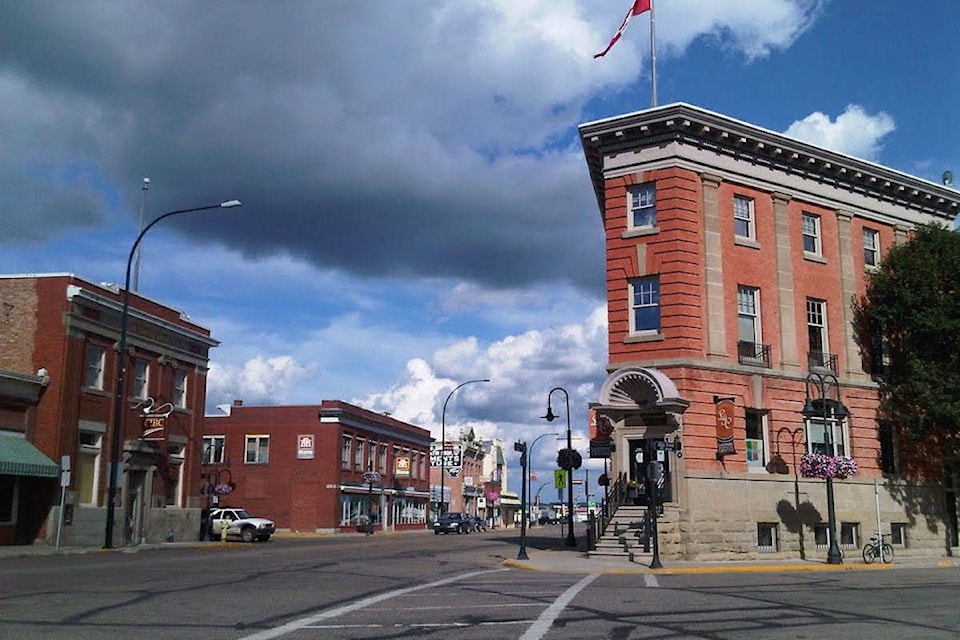Council yesterday approved Bylaw 400.24, which amends Land Use Bylaw (LUB) 400 to streamline the permitting and development process, and make sure in-fill development complements the existing neighbourhood.
“The changes in the Land Use Bylaw are designed to cut red tape and streamline our permitting processes, which should help speed up approvals and reduce costs,” said Mayor Grant Creasey. “This is another important step in ensuring Lacombe remains an attractive place to live and do business.”
“We’re all very excited to see these amendments passed by Council,” said Chief Administrative Officer Mathew Goudy. “When this process started, Council was clear that they wanted fewer regulatory roadblocks to growth, and to see in-fill development that fit with the existing community. The new bylaw delivers on both of these points.”
Bylaw 400.24, along with the previously approved Bylaw 400.23, made a number of significant amendments to LUB 400. Changes include streamlining procedures for businesses looking to operate in an existing building, eases on-site parking requirements for businesses located in existing downtown buildings, and allows for the use of outdoor storage yards and temporary buildings.
Under the new regulations, if a business applies for an occupancy permit to open in an existing building that met the conditions and development requirements of the LUB of its time, no additional upgrades will be required. Any proposed additions, amounting to less than five per cent of the size of the existing building, will not trigger further conditions; however, if the building was never brought up to the standard of any bylaw, improvements may be required.
To help ease on-site parking requirements for businesses located in existing downtown buildings, the City’s development officers can now grant variances up to a hundred per cent of the parking requirements for all occupancy permits issued within non-residential districts, with due consideration on the impact on neighbouring landowners.
There is a high demand from local businesses for outdoor storage yards. Instead of enforcing development on these parcels, the amended bylaw allows businesses to use adjacent lots or lands within close proximity to the principal building as storage areas.
On a related note, residents can utilize temporary buildings or shipping containers for common situations such as moving or renovation projects. Homeowners can use temporary buildings for storage purposes up to a maximum of 30 consecutive days, or up to 60 days, if an additional 30 days has been approved by the Chief Administrative Officer.
The improved bylaw contains changes to the development permit application process that can potentially save applicants weeks of processing time.
“Development officers have been granted additional discretionary authority to approve larger variance requests if they receive no response from property owners following the mandatory public notification process,” said Director of Operations and Planning Jordan Thompson. “However, applications that, in the opinion of the officer, require consideration from the Municipal Planning Commission can still be referred to the Commission.”
Development officers also have the authority to grant larger variances of up to 15 per cent from the requirements of the LUB, subject to compliance with other requirements. “This doesn’t mean that every developer is automatically entitled to a 15 per cent variance, but with a solid rationale, the department can issue permits for existing variances or small discrepancies without costing the community extra time and money,” said Acting Manager of Planning and Development Crystal Chappell.
The amended LUB also provides flexibility for R1 and R-L1 property owners to develop larger accessory buildings or garages that may be up to 70 per cent of the size the principal building. Also, those interested in developing secondary suites or garage suites can now plan for developments up to the equivalent of 90 per cent of the main floor area of the principal dwelling unit.
Pre-approval of secondary suites is something the local development community has been asking for. Now, where an approved outline plan identifies pre-approved locations for garden and secondary suites, they shall be considered a permitted use, and up to half of the total number of suites allowed per block may be pre-approved. This flexibility should help developers better market their subdivisions.
Lastly, the bylaw allows for the creation of a Downtown Area Redevelopment Plan (DARP) overlay for the Central Residential District. It also increases the side yard setback for residential development within DARP to two metres – with the exception of development within Plan 162 4190, and Plan 172 2619 – to support more sensitive infill development.
To view Bylaw 400.24, go to page 25 of the March 9, 2020, Council Meeting Agenda, located at
http://www.lacombe.ca/home/showdocument?id=13207.
-Submitted by the City of Lacombe
